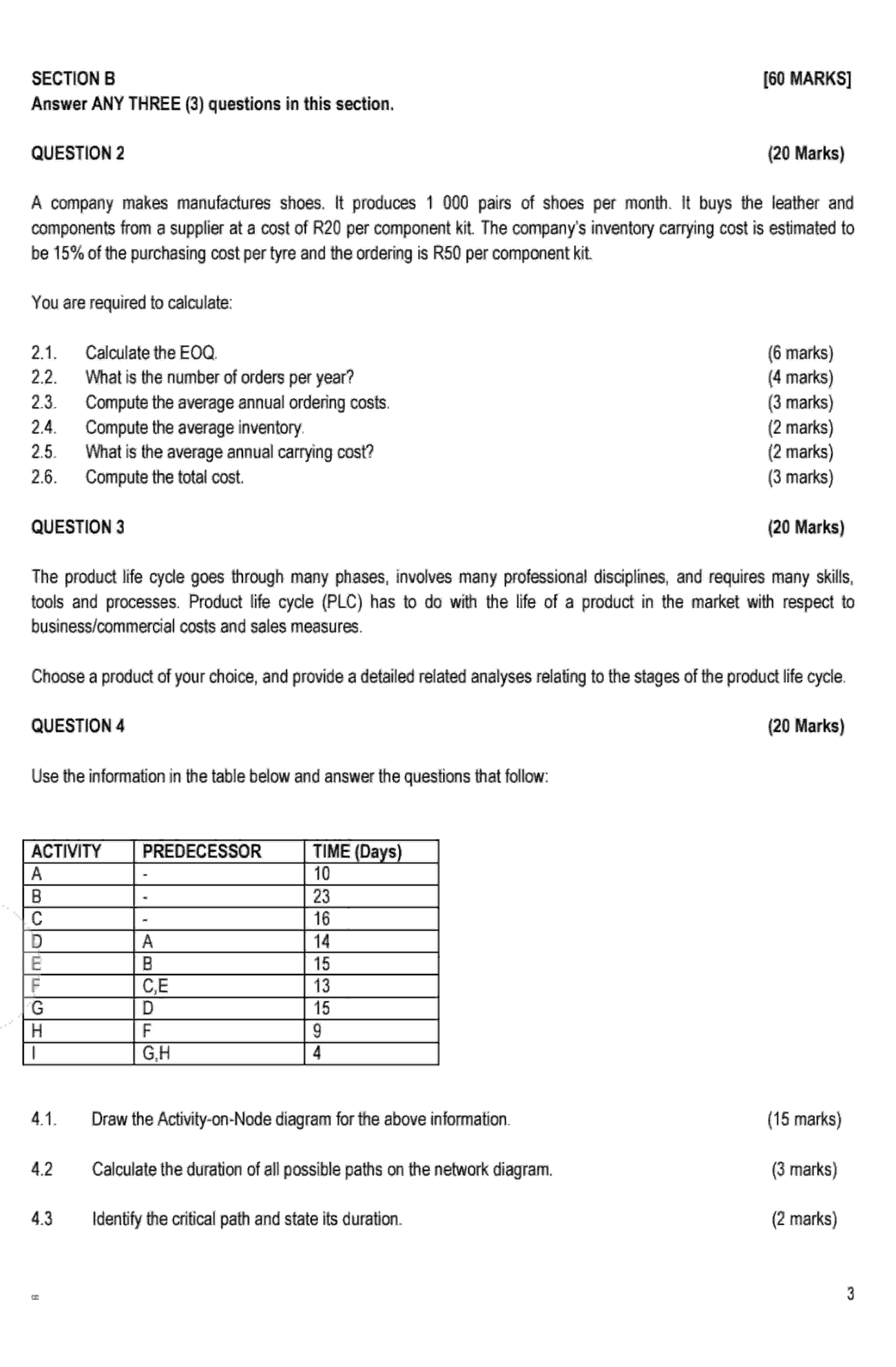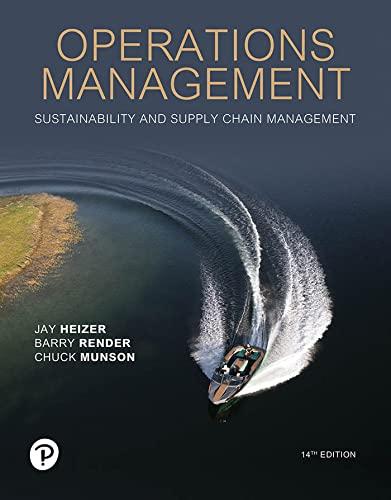Answered step by step
Verified Expert Solution
Question
1 Approved Answer
QUESTION 5 ( 2 0 marks ) ABC Analysis classifies inventory into three categories according to some measure of importance with the intention of allocating
QUESTION
marks
ABC Analysis classifies inventory into three categories according to some measure of importance with the intention of
allocating control efforts accordingly. The idea is to establish inventory policies that focus resources on a few critical
inventory parts and not the many trivial ones. It is not realistic to monitor inexpensive stock with the same intensity as
very expensive items.
You are provided with the following information. Conduct an ABC analysis, categorising each item of stock
appropriately.
END OF PAPER
DATA SHEETA
order quantity
EOQ, optimum order quantity
annual demand units
setup ordering cost for each order
holding carrying cost per unit per year rands
daily production rate
daily demand rate
price QUESTION
Marks
By applying Porter's methods on comparative advantage, conduct a detailed analysis of how the decision to relocate will
affect Apple's operational competitive advantage.
SECTION B
MARKS
Answer ANY THREE questions in this section.
QUESTION
Marks
A company makes manufactures shoes. It produces pairs of shoes per month. It buys the leather and
components from a supplier at a cost of R per component kit. The company's inventory carrying cost is estimated to
be of the purchasing cost per tyre and the ordering is R per component kit.
You are required to calculate:
Calculate the EOQ.
What is the number of orders per year?
Compute the average annual ordering costs.
Compute the average inventory.
What is the average annual carrying cost?
Compute the total cost.
QUESTION
Marks
The product life cycle goes through many phases, involves many professional disciplines, and requires many skills,
tools and processes. Product life cycle PLC has to do with the life of a product in the market with respect to
businesscommercial costs and sales measures.
Choose a product of your choice, and provide a detailed related analyses relating to the stages of the product life cycle.
QUESTION
Use the information in the table below and answer the questions that follow:
Draw the ActivityonNode diagram for the above information.
Calculate the duration of all possible paths on the network diagram.
Identify the critical path and state its duration.QUESTION
By applying Porter's methods on comparative advantage, conduct a detailed analysis of how the decision to relocate will
affect Apple's operational competitive advantage.
SECTION B
MARKS
Answer ANY THREE questions in this section.
QUESTION
Marks
A company makes manufactures shoes. It produces pairs of shoes per month. It buys the leather and
components from a supplier at a cost of R per component kit. The company's inventory carrying cost is estimated to
be of the purchasing cost per tyre and the ordering is R per component kit.
You are required to calculate:
Calculate the EOQ.
What is the number of orders per year?
Compute the average annual ordering costs.
Compute the average inventory.
What is the average annual carrying cost?
Compute the total cost.
QUESTION
The product life cycle goes through many phases, involves many professional disciplines, and requires many skills,
tools and processes. Product life cycle PLC has to do with the life of a product in the market with respect to
businesscommercial costs and sales measures.
Choose a product of your choice, and provide a detailed related analyses relating to the stages of the product life cycle.
QUESTION
Use the information in the table below and answer the questions that follow:
Draw the ActivityonNode diagram for the above information.
Calculate the duration of all possible paths on the network diagram.
Identify the critical path and state its duration.SECTION B
MARKS
Answer ANY THREE questions in this section.
QUESTION
Marks
A company makes manufactures shoes. It produces pairs of shoes per month. It buys the leather and
components from a supplier at a cost of R per component kit. The company's inventory carrying cost is estimated to
be of the purchasing cost per tyre and the ordering is R per component kit.
You are required to calculate:
Calculate the EOQ.
What is the number of orders per year?
Compute the average annual ordering costs.
Compute the average inventory.
What is the average annual carrying cost?
Compute the total cost.
marks
marks
marks
marks
marks
marks
Marks
QUESTION
The product life cycle goes through many phases, involves many professional disciplines, and requires many skills,
tools and processes

Step by Step Solution
There are 3 Steps involved in it
Step: 1

Get Instant Access to Expert-Tailored Solutions
See step-by-step solutions with expert insights and AI powered tools for academic success
Step: 2

Step: 3

Ace Your Homework with AI
Get the answers you need in no time with our AI-driven, step-by-step assistance
Get Started


